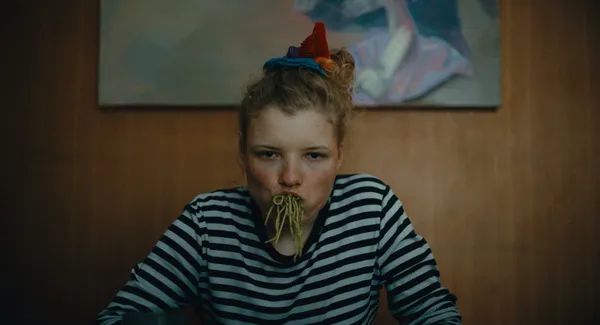Eye For Film >> Movies >> How To Be Normal And The Oddness Of The Other World (2025) Film Review
How To Be Normal And The Oddness Of The Other World
Reviewed by: Marko Stojiljkovic

What does it mean to be normal? How do we define “normal” in the ever-changing contemporary world? What if the world we live in is abnormal itself? Could we ever go back to normal once we “fall off the wagon”? Austrian filmmaker Florian Pochlatko asks the same questions in his feature-length debut How to Be Normal And The Oddness of the Other World.
The protagonist Pia, played by the up-and-coming actress Luisa-Céline Gaffron, obviously did something in the past to be labelled “not normal”. We meet her just before she gets released from a mental institution to at least try to get back into “normal” life. She suffers from her disorder, but also from the prescription drugs she takes, both their effects and side effects. Her problems also include the bad break-up with her ex-boyfriend Joni (Felix Pöchhacker), her own patterns of self-destructive behaviour, including alcohol and substance abuse and her own unrealised ambitions. Her new British boyfriend Ned (Wesley Joseph Byrne) is not of much help and the question is whether he is actually that much into her.

Her parents, who should theoretically “monitor her sanity”, have troubles of their own. Mother Elfie (Elke Winkens) is overwhelmed by her work narrating the nebulous, catastrophic scenarios for television shows and appears cold to Pia. Father Klaus (Cornelius Obonya) has anger issues connected to the expected merger at his company, but he at least tries to care for his daughter by employing her and keeping her busy at his workplace. The relationship between the parents is not great either.
Pia also has disturbing dreams and hallucinations that seem quite real to her. She sees her parents as characters of a trashy crime TV show and herself being chased by the “men in black”. Sometimes she dreams of Joni, and sometimes of the impending doom and destruction. And everything seems so real to her.
Pochlatko puts us completely in his protagonist’s shoes, without even a slightest attempt to define the common reality that surrounds her and therefore to answer the question if she is normal or the world has gone mad. That kind of approach proves to be welcome in some aspects, as it opens an opportunity for him to stage the outlandish set-piece sequences masterfully shot by Adrian Bidron and attractively edited by Julia Drack. It also enables Gaffron to jump head-first into her role and properly shine in it by displaying the range of her talent.
However, it all seems like a bit of a cop-out, since the filmmaker does not appear interested in sharing his vision of “normal” with us or even criticising the contemporary world in an eloquent manner that goes beyond the immediate surface of the phenomena. On top of it, the whole thing becomes quite repetitive even before the half-time mark of the 102 minutes of runtime, making How to Be Normal… - which premiered at Berlinale’s Perspectives and opened the national film gathering Diagonale in Graz - appear like a string of one-note shorts that, welded together, play out as a roller coaster ride. Finally, it is a ride, okay, and it is a bit nauseating and therefore not sterile. But the tilted feeling we are left with in the end does not come from deep insights, but rather from tricks and stylish touches.
Reviewed on: 31 Mar 2025















